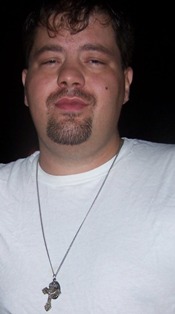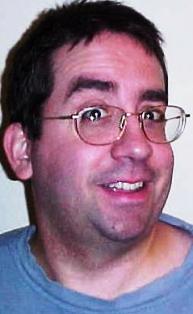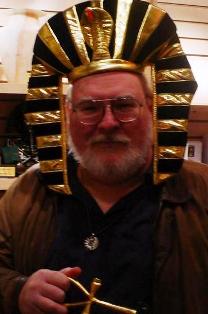 Absolut Vodka is honoring the Thirtieth Anniversary of the Rainbow Liberation Flag created by Seamstress Gilbert Baker. To watch a video by HOMOVISION which interviews Gilbert @ an English pub regarding the new campaign please see Andy's post @ Towleroad. Here is the official press release explaining the three part campaign for Absolut Colours:
Absolut Vodka is honoring the Thirtieth Anniversary of the Rainbow Liberation Flag created by Seamstress Gilbert Baker. To watch a video by HOMOVISION which interviews Gilbert @ an English pub regarding the new campaign please see Andy's post @ Towleroad. Here is the official press release explaining the three part campaign for Absolut Colours:
The History of the Rainbow Flag
by Steven W. Anderson
copied from Planet Out and originally published
in GAZE known as Lavender Magazine (Minneapolis)
Color has long played an important role in our community's expression of pride. In Victorian England, for example, the color green was associated with homosexuality. The color purple (or, more accurately, lavender) became popularized as a symbol for pride in the late 1960s -- a frequent post-Stonewall catchword for the gay community was "Purple Power." And, of course, there's the pink triangle. Although it was first used in Nazi Germany to identify gay males in concentration camps, the pink triangle only received widespread use as a gay pop icon in the early 1980s. But the most colorful of our symbols is the Rainbow Flag, and its rainbow of colors -- red, orange, yellow, green, blue and purple -- represents the diversity of our community. The first Rainbow Flag was designed in 1978 by Gilbert Baker, a San Francisco artist, who created the flag in response to a local activist's call for a community symbol. (This was before the pink triangle was popularly used as a symbol of pride.) Using the five-striped "Flag of the Race" as his inspiration, Baker designed a flag with eight stripes: pink, red, orange, yellow, green, blue, indigo and violet. According to Baker, those colors represented, respectively: sexuality, life, healing, sun, nature, art, harmony and spirit. In the true spirit of Betsy Ross, Baker dyed and sewed the material for the first flag himself.
The first Rainbow Flag was designed in 1978 by Gilbert Baker, a San Francisco artist, who created the flag in response to a local activist's call for a community symbol. (This was before the pink triangle was popularly used as a symbol of pride.) Using the five-striped "Flag of the Race" as his inspiration, Baker designed a flag with eight stripes: pink, red, orange, yellow, green, blue, indigo and violet. According to Baker, those colors represented, respectively: sexuality, life, healing, sun, nature, art, harmony and spirit. In the true spirit of Betsy Ross, Baker dyed and sewed the material for the first flag himself.
Baker soon approached San Francisco's Paramount Flag Company about mass producing and selling his "gay flag." Unfortunately, Baker had hand-dyed all the colors, and since the color "hot pink" was not commercially available, mass production of his eight-striped version became impossible. The flag was thus reduced to seven stripes.
In November 1978, San Francisco's gay community was stunned when the city's first openly gay supervisor, Harvey Milk, was assassinated. Wishing to demonstrate the gay community's strength and solidarity in the aftermath of this tragedy, the 1979 Pride Parade Committee decided to use Baker's flag. The committee eliminated the indigo stripe so they could divide the colors evenly along the parade route -- three colors on one side of the street and three on the other. Soon the six colors were incorporated into a six-striped version that became popularized and that, today, is recognized by the International Congress of Flag Makers.
In San Francisco, the Rainbow Flag is everywhere: It can be seen hanging from apartment windows throughout the city (most notably in the Castro district), local bars frequently display the flag and Rainbow Flag banners are hung from lampposts on Market Street (San Francisco's main avenue) throughout Pride month. Visiting the city, one cannot help but feel a tremendous sense of pride at seeing this powerful symbol displayed so prominently.
Although the Rainbow Flag was initially used as a symbol of pride only in San Francisco, it has received increased visibility in recent years. Today, it is a frequent sight in a number of other cities as well -- New York, West Hollywood and Amsterdam, among them. Indeed, the Rainbow Flag reminds us that ours is a diverse community, composed of people with a variety of individual tastes of which we should all be proud.

08 June 2008
Taking A Shot For Queer History: Absolut honors 30th Anniversary of the Rainbow Flag
Chicken Scratched by
F6's Editor
at
10:39
![]()
Labels: Absolut Vodka, Equality, gay rights, GLBT COMMUNITY, PRIDE, Queer History Challenge
Subscribe to:
Post Comments (Atom)
give medals 4 killing men but 4 loving men they wish you were dead?

thanks to the sacrifice of many the scourge of Dont Ask Dont Tell in the land of the free and home of the brave will be gone by the end of June!!!!
















No comments:
Post a Comment